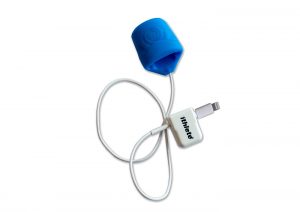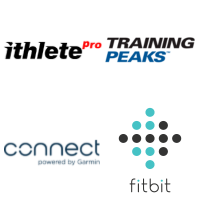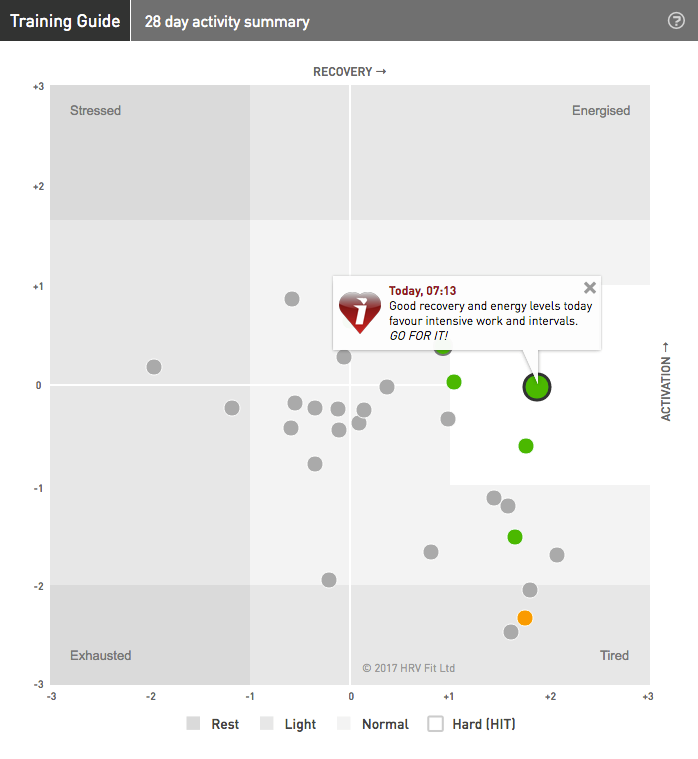Heart rate variability (HRV) had been harnessed by astronauts and elite athletes alike for decades in the lab and with expensive equipment. ithlete was the first HRV measurement app – in fact it was the first heart rate monitor of any kind on the AppStore way back in 2009!
What made ithlete special then was that it adopted a new way of thinking bringing what had previously been a measure that required lab grade equipment and specialist interpretation to the smartphone.
ithlete has been copied by many imitators since 2009, but as we continue to develop and innovate no one competitor has achieved the combination of easy to access ithlete’s features and benefits.
Paced breathing
When you breathe in your heart beats faster, and when you breathe out, it slows down again. For this reason, we ask you to follow paced breathing whilst we measure your HRV.
We chose a particular rate and pattern of breathing for ithlete because it had given good results in testing and was supported by research. We later found out that it coincided with the resting breathing pattern of a group of club runners, so this finding wasn’t by accident. Find out more.
A one minute measure
For HRV to be really useful, it needs to be measured several times per week, and ideally every day (or certainly every day you intend to train). Very few people have the luxury of a relaxed morning routine, so we have to minimise the time taken to keep on doing this.
One minute was set as the target, and after lots of research we did it! Choosing both rMSSD and paced breathing were important contributors to making this possible and the 60s measure is now widely accepted. Find out more.
Choice of sensor

Whilst scientific validity and accuracy remain the centre of everything we do here at ithlete we realise not everyone wants the same thing. This, and understanding that only a small number of people were prepared to put on a strap first thing every morning, meant we knew we must provide sensor options.
Using the same science as hospital pulse monitors, the ithlete Finger sensor is the most convenient way to measure heart rate variability. Now available with Lightning or headset jack connections this is the best choice for most users. The next option is a Bluetooth Smart HRM strap, of which many of the leading models are compatible. Find out more.
Unique scoring system
ithlete uses approximately 100 point scale, where a higher number is better. Young athletes typically score in the high 80s and 90s, whereas older but still fit and healthy people score in the 60s and 70s. Those with health challenges will score low 50s and below. It is possible to exceed 100 too, the highest score we’ve seen so far is 116 – but if you beat it let us know!
We are often surprised at how strong an emotional response people have to their first reading – some with pride, and others immediately realising they have work to do! Find out more.
Colour coded advice and trends
From the start, we wanted ithlete to be usable on a number of levels. A simple traffic light system is sufficient for some users, whilst others are more data and numbers driven. The colours show your score in relation to a personal baseline, ensuring you know how to train today.
- Green: Good recovery. Ready to go!
- Orange: Recovery impaired, lower intensity advised
- Red: Your body is stressed. Recovery, very low intensity or rest
As well as daily advice, ithlete identifies and colour codes trends over the previous week and month using data from studies on overtraining. Some coaches that use HRV regard the weekly trend as the most important indicator, since an amber or red reflects a level of accumulated fatigue, rather than just one bad day that you might decide to train through. The monthly indicator shows longer term imbalances of stress and recovery. Find out more.
Wellness metrics to add context
It’s all very well getting colour coded HRV numbers, but how do you identify what caused the changes? The answer is to record a set of metrics that provide context and allow you to identify the likely cause. Following your one-minute HRV measurement ithlete asks you to record 6 factors;
- Sleep
- Stress management
- Diet
- Mood
- Fatigue
- Muscle soreness
The first 3 are Recovery Enablers i.e. factors that you can influence, and the last 3 are subjective i.e. how you feel right now. By looking back over your data, you can start to see which factors had the biggest impact on your recovery, and perhaps your overall health. Almost everyone who has used ithlete for a period of time will learn something about their body – what it likes and what it doesn’t like – that they did not know before. Find out more.

Training Load
Of course, recording the training itself is fundamental to any successful programme. ithlete encourages users to rate the difficulty of their last session in a simple subjective way, even if they don’t have wearables to calculate this for them. Alternatively, if you use Garmin, Fitbit or Training Peaks you can import every training sessions details automatically. Find out more.
Training guidance
Whilst the daily Red – Amber – Green traffic light recommendation remains sufficient for a number of users. Green and red are easy enough to apply, but amber / orange remains more difficult and many athletes want to know in more detail what they should do. For this purpose, we developed the ithlete Pro Training Guide, which splits your current state into recovery (based on HRV) and activation (based on average RR interval). The Training Guide has a unique 4 quadrant map that allows you to see whether it is energy, recovery or both you are lacking on a particular day, and how close you are to a boundary. It also allows you to see when you are in a well recovered, high energy state especially suitable for high intensity (HIT) training. Our latest addition is an artificial intelligence avatar called Simon Says which distils all of the data in to a couple of easy to digest sentences. Find out more.

